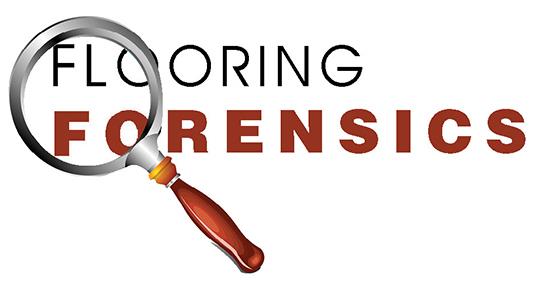Flooring Forensics: It’s time to give broadloom another look - March 2021
By Lew Migliore
Broadloom carpet was once king of flooring, but over the years, its use and popularity has dwindled due to the onslaught of hard surface flooring, mostly in the form of luxury vinyl tile and plank, and the fact that the carpet industry and manufacturers oversold carpet and made it cheaper and cheaper-in both price and quality-and failed to understand how to market it. But the king is not dead yet and, in fact, is resurrecting himself in new and creative ways.
Broadloom-so called due to the fact the looms used to make woven carpet are broad or of wide width-can be the canvas on which the personality of a room is created. With the great range of pattern, texture and color available, there is no other flooring material that lends itself to design like broadloom carpet.
Despite its waning popularity over the years, there have been those who have held fast and refused to undermine the positive attributes of carpet. Now, we see the pendulum swinging back a bit with carpet products that are unique, high-quality, innovative, stylish and very functional. And with a strong residential market predicted for 2021, it could be a good year for broadloom in the home.
A NEW LOOK
Broadloom carpet is no longer the boring, solid color, cut pile product that it once was. And thanks to new and innovative tufting methods and recent advanced woven technology, broadloom carpet is alive and starting to revive itself in a niche.
By Floor Focus estimates, broadloom carpet accounts for close to 18% of the commercial market. In the residential market, where broadloom seems to be making a comeback of sorts, its marketshare hovers around 35%.
Broadloom’s strongest niches in the commercial market are in hospitality, tenant improvement and senior living public space. In the residential market, broadloom carpet is used in bedrooms and in rooms where an individual statement can be made, as well as in apartments, condos and multifamily facilities and anywhere, in either market segment, where comfort, quiet and style are desired.
Almost all commercial broadloom carpet is made with nylon, either type 6 or type 6,6. And most of it today is solution-dyed-that is, the color pigment is integrated into the thermoplastic fiber in molten or solution form.
Wool carpet is the Rolls Royce of broadloom carpet in residential, and wool/nylon blends, most often 80% wool and 20% nylon, are used in hospitality. These carpets use a pre-dying method, usually skein dying, where small lots of yarn are dyed so that any color or pattern can be created. There is a saying about wool carpet I learned early in my career, “Wool is like a beautiful woman-it grows old gracefully,” as opposed to synthetic carpet, which can ugly out. Synthetic carpet rarely wears out, but its appearance can be diminished with traffic.
Residential carpet at the higher end is mostly nylon. However, more carpet today is made using solution-dyed polyester. Density is the key to performance in all aspects of broadloom carpet; tighter yarn twist, more stitches per inch, tufts closer together across the width (gauge) and lower pile height together create a better-performing carpet with both nylon and polyester fiber. Broadloom carpet styles come in cut pile, loop pile and cut and loop, and various patterns can be created with each.
WHAT MAKES IT SO GOOD
To me, with roots in broadloom carpet, no other floorcovering comes close to it. And certainly, no other flooring product can claim the luxury factor that broadloom carpet can.
Let’s take a look at other qualities that elevate the category:
Style and design. No flooring material can make a statement like broadloom carpet, where almost any style, color or pattern that can be conceived can be achieved. As one designer said recently, “There is still something beautiful about a wonderful broadloom carpet.” It can be made in any color, an assortment of colors and any pattern one can imagine. Though in niches there are still woven products, like Wiltons and Axminsters, the vast majority of broadloom is tufted. And the yarn used in broadloom can be blended with several plies of different colors.
Comfort. Broadloom carpet is warm, soft, quiet, comfortable and relaxing. No floorcovering reduces in-room sound as much as wall-to-wall broadloom.
Installation. Broadloom carpet is easier to install in a home than hard surface flooring. It’s faster and more forgiving if the substrate is not perfectly level. In the commercial market, patterned broadloom still requires the skills of installation artisans, particularly in the hospitality market where color and pattern are fundamental to creating a gorgeous space.
Cleanability. Broadloom carpet hides dust and dirt and is easier and faster to clean than hard surface flooring. The Carpet and Rug Institute has a study on its site that compares the cleaning and maintenance of hard surface flooring to carpet. Carpet also acts as a filter trapping dust, dirt and allergens as opposed to hard surface, which allows it all to float around and circulate through the space.
Side note: The 2021 Pantone colors are Ultimate Gray and Illuminating (yellow). Yellow is the most difficult color to keep clean in a carpet, having no optimal range. So, even though it may look bright and beautiful, it won’t stay that way for long if it’s used in large volume in a carpet, as opposed to when it’s used as an accent color.
Copyright 2021 Floor Focus
Related Topics:Carpet and Rug Institute
